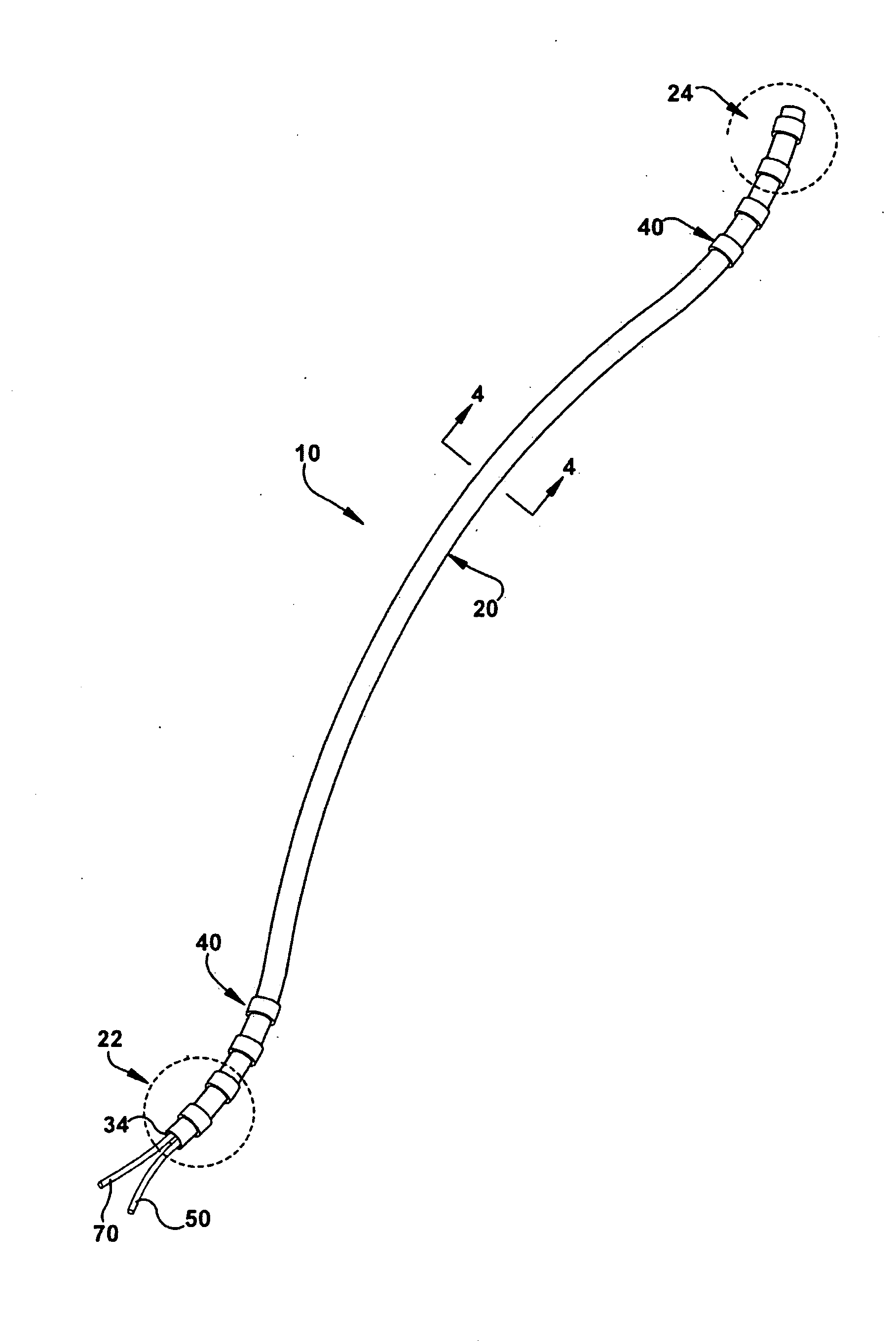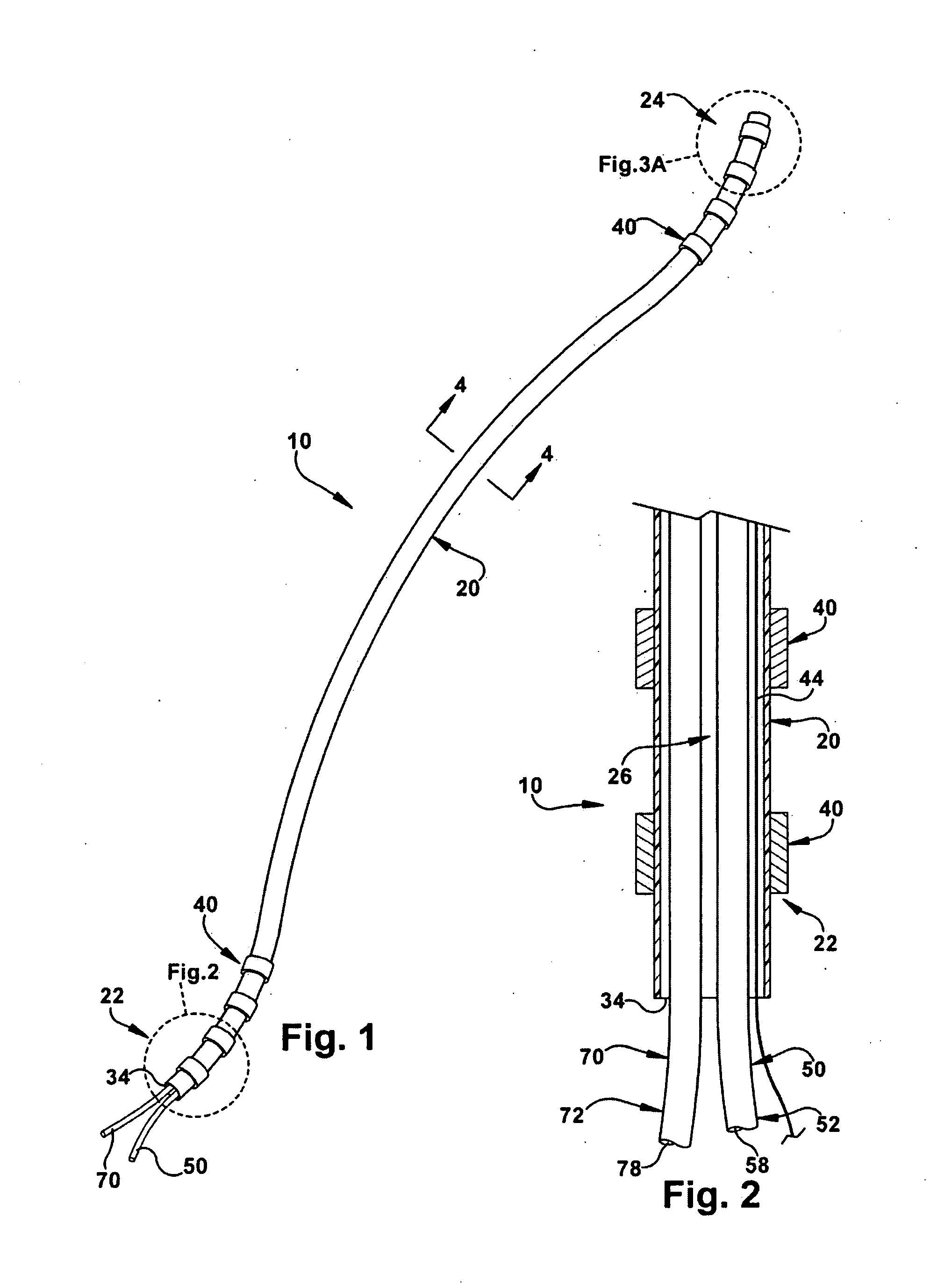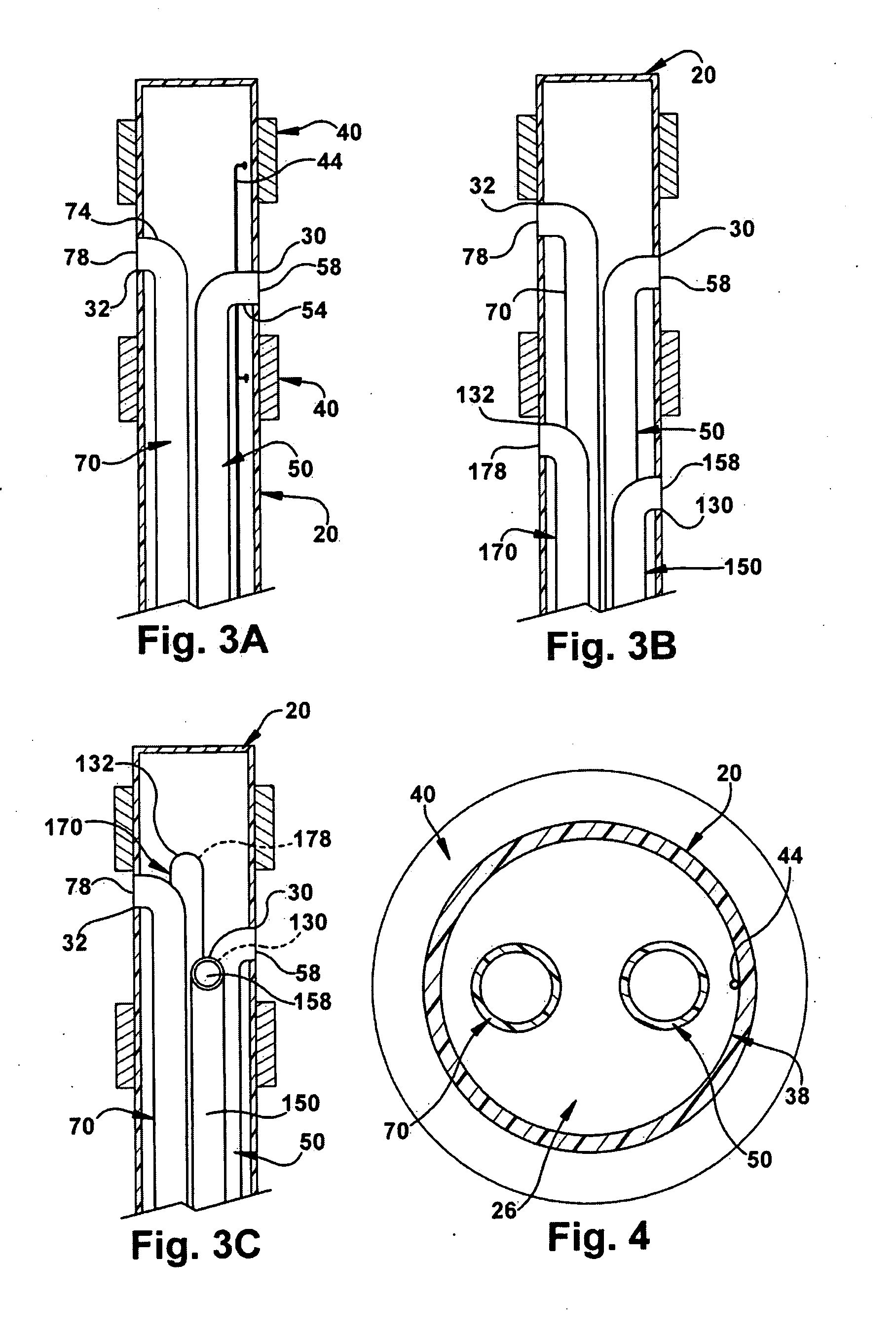Method and apparatus for securing a neuromodulation lead to nervous tissue or tissue surrounding the nervous system
a neuromodulation and lead technology, applied in the field of neuromodulation, can solve the problems of difficult to keep the lead in position, obstacles to the final application of such methods in humans, and the positioning of the electrodes, etc., and achieve the effect of stimulating nervous tissu
- Summary
- Abstract
- Description
- Claims
- Application Information
AI Technical Summary
Benefits of technology
Problems solved by technology
Method used
Image
Examples
Embodiment Construction
[0025]In accordance with the present invention, a neuromodulation lead 10 for stimulating nervous tissue is depicted in FIG. 1. The lead 10 comprises an elongated member 20 having a proximal end 22, a distal end 24, and a passage 26 extending therebetween. The passage 26 terminates at an opening 34 at the proximal end 22 and at the distal end 24 of the elongated member 20. The elongated member 20 is tubular in nature and preferably made of a soft, flexible material (such as any surgical grade tubing) that allows the elongated member 20 to deflect under axial force without plastic deformation to prevent damage to the patient's tissues during implantation. Although the elongated member 20 is depicted as having a substantially circular profile, those skilled in the art will appreciate that any other suitable profile may be used, such as square or rectangular.
[0026]One or more electrical contacts 40 are secured, or otherwise disposed, around the periphery of the elongated member 20 via ...
PUM
 Login to View More
Login to View More Abstract
Description
Claims
Application Information
 Login to View More
Login to View More - R&D
- Intellectual Property
- Life Sciences
- Materials
- Tech Scout
- Unparalleled Data Quality
- Higher Quality Content
- 60% Fewer Hallucinations
Browse by: Latest US Patents, China's latest patents, Technical Efficacy Thesaurus, Application Domain, Technology Topic, Popular Technical Reports.
© 2025 PatSnap. All rights reserved.Legal|Privacy policy|Modern Slavery Act Transparency Statement|Sitemap|About US| Contact US: help@patsnap.com



